FarsiNews
..... News Related to Iran, Iranians, Persians and Farsi Speaking People
اخبار فارسی
-
Iran News @ FarsiNet
-
اخبار ايران
...
|

|
|---|
|
Whatever Happenned to Iran's Super Stealth Fighter? - Everyone outside Iran saw the project for the farce that it was
Iran The 2nd World's Worst Internet Oppressor in 2015 - Tied with Syria - China is 1st.
Iran 2015 Internet Freedom Full Report
Global Internet Freedom Reports - Freedom On The Net 2015
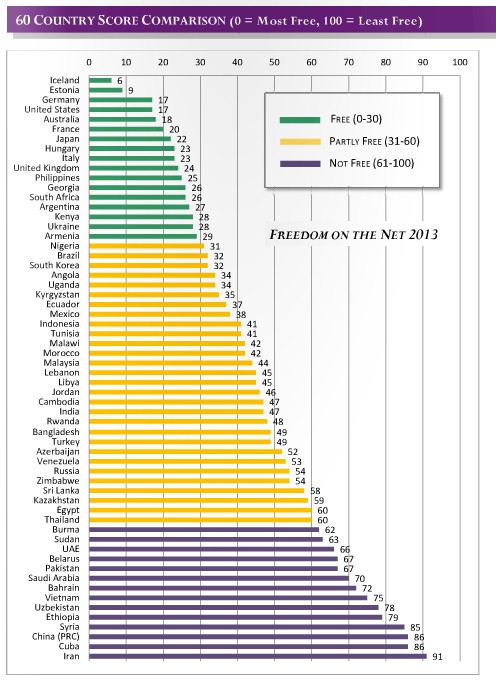
|
[an error occurred while processing this directive]
|
|
|---|
Amnesty: Iran has most executions in 2010
Iran Parliament Approves Death Penalty for Apostasy Bill, Sept. 11, 2008
Iran's Apostasy Death Penalty Raises U.S. Concern
Iran: Christian Couple in their 60s Died From Iran Secret Police Attack, August 6, 2008
Growth of Christianity in Iran - Reported by Peykeiran News - Nov. 12, 2007 - موج رو به گسترش
مسيحيت در ايران!
| |
Growth of Christianity in Iran is accelerated by Iranian Christian Radio and TV broadcasts such as Mohabat TV, SAT7 TV, Nejat TV and Radio Mojdeh.
These programs and their evangelist teachers/programs use various methods to attract Iranians - from Healing online prayer sessions, praying for pecae and comfort, filling of the Holy Spirit and encouraging and teaching a personal relationship with GOD without any middle person (Prophet, Saint, Imam, ...).
صداي عدالت : موج
رو به گسترش مسيحيت تحت تاثير تبليغات ماهوارهاي شبكه محبت و نجات در شمال كشور شكل گرفته است. از ابزار و ادوات تبليغاتي اين مبلغان ميتوان به شفابخشي ايجاد آرامش دنيوي و اخروي، انكار اسلام، قرآن و حلول روحالقدس در قلب افراد، صحبت نمودن بدون واسطه با خداوند و... نام برد.
|
 Iran: The Struggle for change
- Who holds the power in Iran??
Iran's Vital Statistics from BBC News
Iran's Role in 9/11
US, CIA,& Saddam Hossein - 40 years in making,
1 Year in Iraq,
War Crime?
Iran: The Struggle for change
- Who holds the power in Iran??
Iran's Vital Statistics from BBC News
Iran's Role in 9/11
US, CIA,& Saddam Hossein - 40 years in making,
1 Year in Iraq,
War Crime?
Iran's Power Hierarchy

|
|

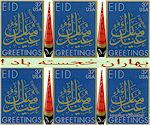
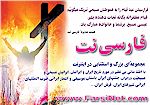
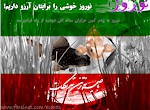



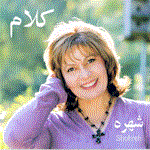
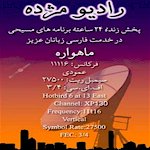

|
|---|
A look at the leadership structure and powers in Iran
Supreme Leader Ayatollah Ali Khamenei: The ultimate decision-maker on all major state and religious matters. He appoints all key positions in the ruling theocracy and controls judiciary and Revolutionary Guards. Supporters believe he is incapable of error and answerable only to God.
Guardian Council: Vets all candidates for parliament, president and other elected posts. Power to veto any legislation. Comprised of six Islamic clerics and six legal scholars hand-picked by Khamenei.
Expediency Council: A 32-member unelected group dominated by conservatives and led by former President Akbar Hashemi Rafsanjani. Mediates in disputes between Guardian Council and parliament. Advises supreme leader.
Expert Assembly: A group of 87 Islamic clerics. Constitution says it oversees supreme leader, but actual role is unclear.
President: Highest elected leader. Leads most aspects of government, but important decisions need backing of supreme leader. President serves for a four-year term. Two terms maximum.
Prime Minister: The 1989 constitutional changes during Presidnecy of Akbar Hashemi Rafsanjani, removed the post of Prime Minister.
Parliament: Structured as Western-style legislative branch, but all key measures by 290-seat chamber must have the backing of supreme leader. Main powers in setting budget and other fiscal matters. Law makers have four-year terms.
|
Iran's Supreme leader Ayatollah Ali Khamenei |

Supreme leader Ayatollah Ali Khamenei: Appointed for life, overrides all other authorities.
It is extremely rare that people publicly criticise ayatollah Khamenei, who is regarded by his supporters as being incapable of error, and only answerable to God.
|
|
|
Iran & World News from BBC
 Top Iran Headline News from BBC
Iran News from Yahoo
Iran News from Google
Latest Iran News
Latest Iran News Headlines from Around the World
Farsi News From Voice of America
- Regional and world news in Farsi.
Voice of America News & Views
- Daily 30 Minutes program.
INBC - International News and Broadcasting
Top Iran Headline News from BBC
Iran News from Yahoo
Iran News from Google
Latest Iran News
Latest Iran News Headlines from Around the World
Farsi News From Voice of America
- Regional and world news in Farsi.
Voice of America News & Views
- Daily 30 Minutes program.
INBC - International News and Broadcasting
 Iran Weekly Press Digest
- Independent bulletin of political, social, and economic affairs.
Jonbesh.org - Iranian Students Movement
Iran Weekly Press Digest
- Independent bulletin of political, social, and economic affairs.
Jonbesh.org - Iranian Students Movement
 Iranian Students News Agency
Islamic Republic News Agency- Persian and Arabic headlines and radio broadcasts.
Iranian Students News Agency
Islamic Republic News Agency- Persian and Arabic headlines and radio broadcasts.
 Peik News - Daily News and Editorials in Persian
...
Street Children,
Dead End Street
Peik News - Daily News and Editorials in Persian
...
Street Children,
Dead End Street
 Statements/News
issued by NCRI- Archive of news and statements by NCRI.
Tehran Times - Daily News, Views & Specials
World News
Statements/News
issued by NCRI- Archive of news and statements by NCRI.
Tehran Times - Daily News, Views & Specials
World News


Online Live News & Radio
|
FarsiNet Iran News Archive
|
|
| Click on date to view archived Iran News
|
 Your submissions, questions, suggestions to
webmaster@farsinet.com Your submissions, questions, suggestions to
webmaster@farsinet.com
Copyright © 1996-2025
FarsiNet. All Rights Reserved.
(010101)
|
|
|---|
|